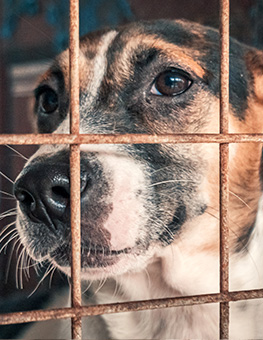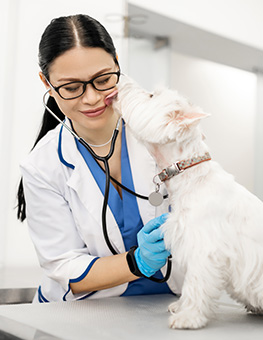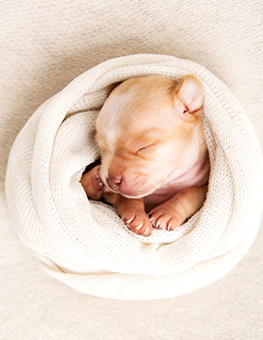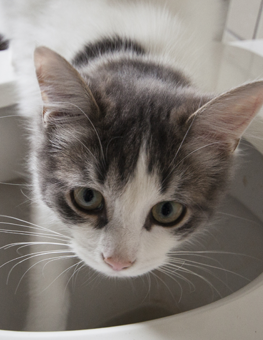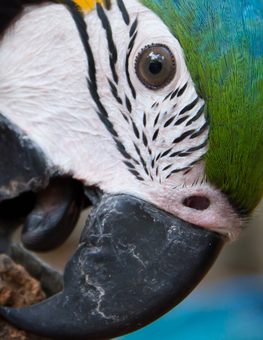Keeping Your Dog’s Teeth Clean
Cleaning your dog’s teeth frequently and keeping an eye out for dental problems are simple steps you can take to keep your dog healthy.
Oral disease affects an astounding 80 percent of dogs by the time they are age 3. In fact, experts warn it’s the most frequently diagnosed health problem for dogs.
The culprit is tartar, caused by plaque buildup from bacteria, combined with saliva and food debris that gets caught between the tooth and gum.
While bad breath is a telltale signs that something is amiss, it’s often just the tip of the iceberg. Left untreated, the buildup of plaque and tartar can cause pain, inflammation and tooth loss, and could lead to more serious infection, potentially damaging the liver, kidney or heart.
When it comes to keeping your dog's teeth healthy and bright, experts agree that prevention is the key. Removal of plaque through brushing, dental checkups and a healthy diet can prevent or delay the onset of gum disease. And it’s important to start early. Once plaque builds up on teeth it gets harder to remove.
Brushing your dog’s teeth may seem tricky, but the at-home treatment is the best method of prevention. A variety of brushing devices and products such as flavored toothpaste can help make it worthwhile. But make sure to avoid using human toothpaste on dogs or cats.
Annual dental exams beginning at age 3 are also recommended to check for oral disease such as: periodontal disease, gingivitis, and swollen gums.
Keep in mind that general anesthesia is required for all dental procedures, which can make teeth cleaning and treatments not only risky, but costly, too. The average cost of a dental cleaning is about between $150 and $500. The time between cleanings varies for small and large breed dogs.
The act of chewing can also help reduce plaque build-up. Crunching on dog biscuits, dental chews, rawhide bones or special rubber toys for dogs is a good way to reduce tartar build-up in between dental cleaning, and can save you about $250 a year for small breed dogs, and about $200 for larger breed dogs.
Brushing your dog’s teeth at home may be tricky, but mastering the simple technique save you money in vet bills.
- Check to see if there any signs of plaque build-up on your pets teeth.
- Get a toothbrush made just for your pet. These can be found online or at a local pet store. If you don't have one, use a small piece of gauze and wrap it on your finger.
- Start by messaging your pet’s gums. This will help them get used to the idea of a foreign object being in their mouth.
- Add a small amount of baking soda and water to your brush or gauze. Brush the teeth in a gentle circular motion, removing any debris. Allow your pet to have a generous amount of water after brushing.
Adding a little dog dental care to the grooming schedule can keep your dog’s teeth clean, his breath fresh, and his heart healthy.



